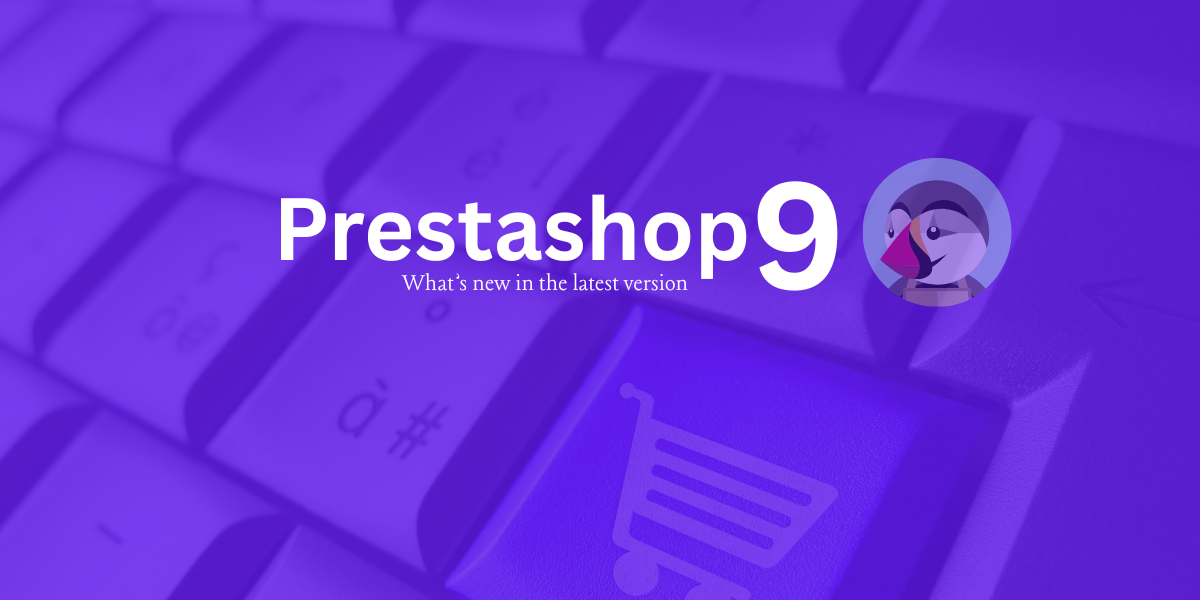The latest version of the globally renowned CMS, PrestaShop is available for use. PrestaShop 9 comes with loads of enhancements focussed on frontend,
Read MoreThe eCommerce industry is constantly evolving and changing. As new technologies and platforms emerge, businesses have to adapt to stay competitive.
But, is it as easy to stay competitive as we think? We know that your competitors and newcomers are giving their best to break the ice. So what exactly should you follow to stay ahead of them?
Please grab a seat because we will cover it precisely in this blog post.
Our business analysts and development experts have compiled six eCommerce trends that will dominate the world in 2022. These trends surf on the edge of the future and will help you stay competitive in this ever-evolving digital market.
So, let’s begin with each trend.

Personalization is the biggest hack of our generation. Everybody wants to feel special, then why don’t we eCommerce guys leverage this to level up our profits? Personalization will turn the tide of your business, and it will be a benchmark for success.
What do you think would have been going on if Amazon didn’t personalize their customer’s experience? No one would have spent more than a few seconds to decide which product to buy.
Our research showed that 64% of people abandon their carts because they can’t find anything interesting.
So, the number one objective is to reduce this abandonment rate by offering your customers personalized shopping experiences through intelligent product recommendations based on customer behaviour and preferences.

Not only this, essential personalization won’t stand the test of time. If merchants want to deliver relevant and personalized experiences to their customers, they must use artificial intelligence (AI). AI-powered experiences would not only help you follow Omnichannel but also help increase your customer retention rate, customer loyalty rate, and ultimately return on investment.
Gone are the days of traditional advertising. Today, trust is the most significant factor that can be fueled through User-Generated Content. Online shoppers are more likely to make purchases after reading user-generated product reviews. For example, 87% of consumers admit that they trust online product reviews as much as personal recommendations (Nielsen).
User-Generated Content builds trust and delivers a better understanding of customers’ needs, boosting conversions. Therefore, you should add other company’s users` opinions about your products, services or policies along with positive and negative feedback from customers.
Innovative Communication is a small part of this strategy. Still, it plays a vital role in increasing brand awareness, building loyalty and driving sales. At the same time, engagement is the key driver for creating a good reputation i.e., and people will be aware of what you have to offer if they are engaged with you.
This strategy helps create engaging messages through applicable Content, videos, images etc. that get shared via word of mouth. Brands should also run loyalty programs or promotions on social media platforms to get involved with their customers.
Subscription plans are a new and smarter way to tell your audience – “We are going to take this relationship to a long-term mode”. That’s right, guys, it’s one of the most potent ways to build a solid and influential audience.
If you’re not currently offering any subscription-based models, now is the time to take a surf at it, especially in 2022. Many popular brands like Netflix, Amazon Prime, New York Times etc., are already offering subscription-based plans to their audience.
Not just that, subscription-based services also help you build a more humanized relationship with your customers, which social media cannot do.
Headless commerce is the future of e-commerce. In a headless commerce model, the transactions are processed by a 3rd party, while merchants have full rights to interact with customers and other merchants on their platform via APIs.
Headless Commerce allows you to exchange data between different platforms through an API or a standardized protocol. It’s going to be the next most everyday thing in the future.
Headless commerce hit hard on industries, including retail, finance, travel, etc. Moreover, it will make e-commerce platforms very flexible.
The reasons are the following. You can use existing systems to create a headless commerce platform quickly.
Also, it reduces the number of aspects that you need to handle by using 3rd party services. Furthermore, it enables merchants to follow their strategy without being affected by system restrictions or limitations. And finally, it makes it much easier for merchants to build new applications and link them with different businesses via APIs/protocols.
Mobile could be called the sole ruler of the eCommerce industry. Statista says more than 87% of online purchases run through mobile devices.
PWA is already doing pretty great in the market to take your mobile commerce to the next-gen and most optimal level. For those who don’t know, Progressive Web Apps are web applications built with technologies like Magento PWA Studio, React Native to result in a responsive web design, and some other cool features.
These apps offer users a better shopping and navigation experience, including offline support and an engaging mobile-app feel. According to Google’s Developer page, it has the following characteristics:
Progressive – Work for every user no matter what browser they use while simultaneously working on any device that needs to be more reliable, fast and engaging.
Responsive – Fit any form factor: desktop computer displays, mobile phones, tablets etc., ensuring it used all available screen space fit in line with expectations of general website behaviour on each platform.
Connectivity Independent – Enhance the app’s ability to work offline or in low connectivity areas by using technologies such as service workers and data storage.
Engaging – Re-engage users quickly, frequently and easily with features like push notifications even when the web app isn’t open.
The core factor why these Progressive Web Apps are getting insanely popular is their pricing. They cost way too cheaper than building Native & Hybrid mobile apps.
You would’ve read or heard about this trend everywhere across the net. Voice Shopping is rapidly changing the course of eCommerce. It is the new way of effortless shopping you can provide to your customers.
Voice Shopping helps consumers to shop without any hassle. It is a perfect blend of Artificial Intelligence and Virtual Reality. According to the prediction, by Statista, by 2024, 52% of all online shopping will be through voice commerce.
Moreover, Voice Shopping helps businesses to reach out to their unfinished customers. It helps direct the consumer towards the product page, ultimately increasing similar content consumption.
This technology trend also enables online shoppers to order products in less time, saving a lot of their precious time. Some of the top known brands already leveraging this tech trend include Amazon, Google, and Apple.
Technology and eCommerce are those sectors in which the first mover theory perfectly sits well. Whosoever takes the first step enjoys the growth.
With so many changes and innovations on the horizon, it looks like 2022 will be a banner year for online businesses of all sizes.
Are you prepared? If not, now is the time to start planning and make sure your business is ready to take advantage of these trends. Hire Prestashop Developer and make your Prestashop unbeatable via future trends from 2022 and beyond.

If you want a free audit of your Prestashop project click here

The latest version of the globally renowned CMS, PrestaShop is available for use. PrestaShop 9 comes with loads of enhancements focussed on frontend,
Read More